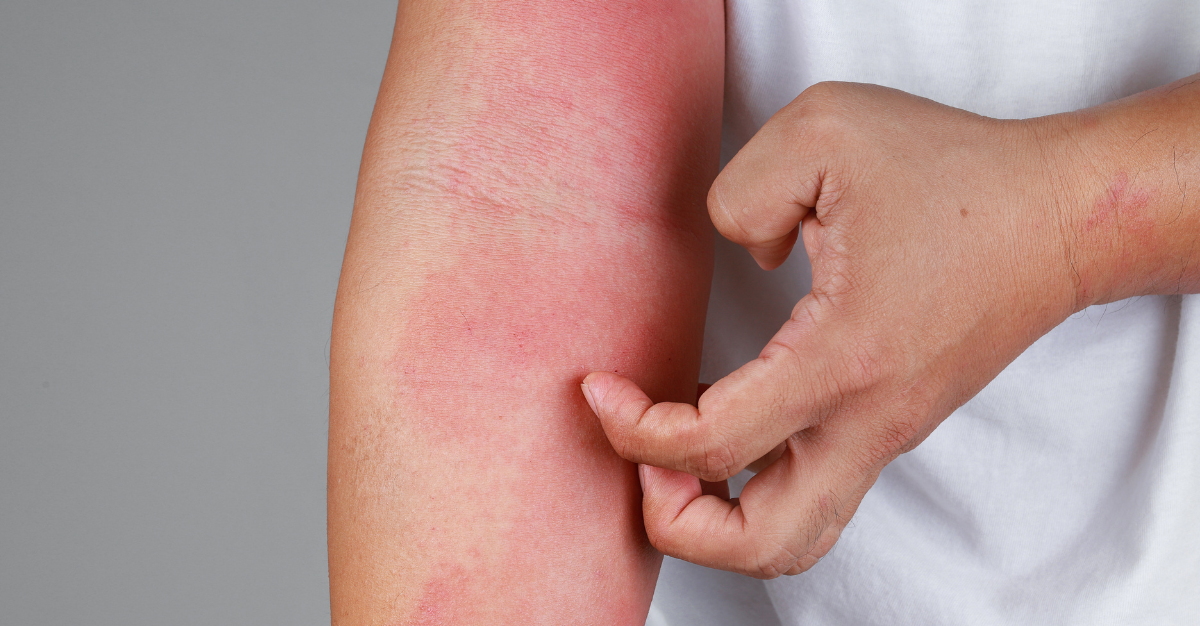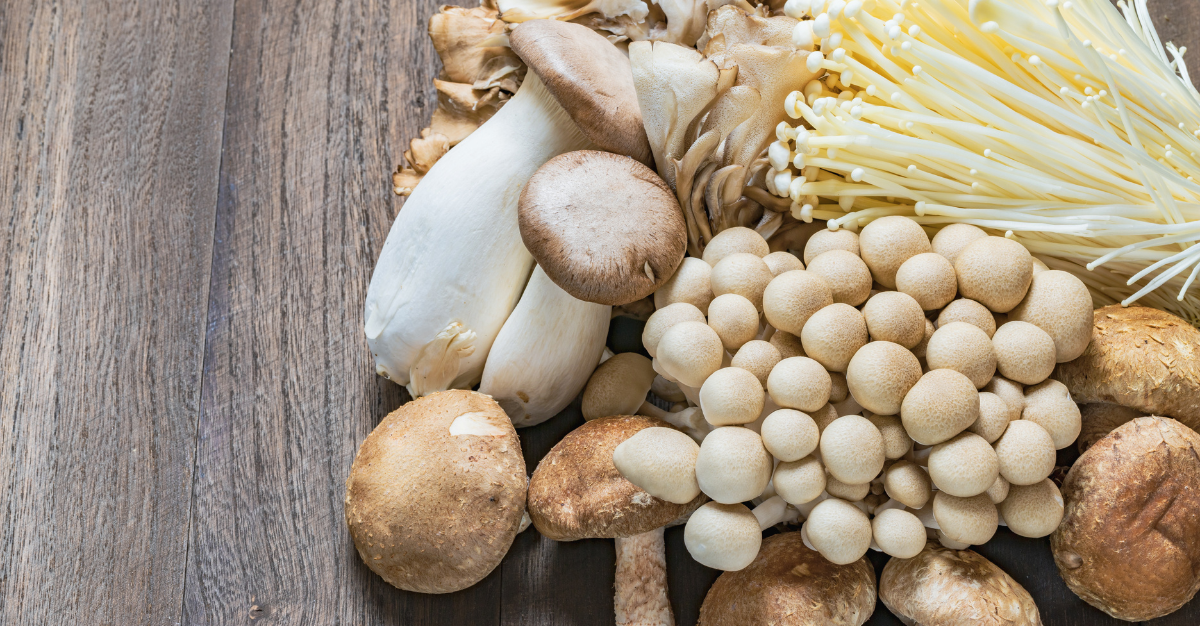
Podcast: Play in new window | Download (Duration: 34:21 — 40.0MB)
Subscribe: Apple Podcasts | Email | TuneIn | | More
One of the most common issues we see in people today is difficulty maintaining a healthy weight. Weight loss is a hot topic and a booming industry, but so many products just don’t work. Unfortunately, there is no magic fix for this, but there is one often overlooked aspect of weight management, and that is insulin. Insulin is an extremely important hormone responsible for regulating several metabolic processes and ensuring cells get the energy they need. Due to this, insulin has a strong influence on weight management. When the body begins to respond less to insulin, it could indicate that you are developing insulin resistance, which can contribute to a variety of health issues. In this week’s episode, The Secret Enemy of Weight Loss, we’ll discuss insulin’s role in metabolism and weight management, as well as some positive lifestyle changes you could make.
Transcription
The Secret Enemy of Weight Loss
00:00:01 – 00:05:01
Welcome to the green wisdom health podcast, with doctor Steven and Janet Lewis, where you will learn about natural solutions to common ailments. And now, here are your hosts doctor Stephen and Janet Lewis. Hello and welcome to this week’s edition of the green wisdom health show. I’m Janet Lewis. And I’m doctor Lewis. And we are here to give you some inspiring helpful healthful hope. So in a world full of a lot of chaos, hopefully we’re bringing you a lot of joy and information and news you can use. So we today are going to talk a little bit about the secret enemy of weight loss because it’s summertime and who’s not trying to get into that bikini for the beach. But having a little bit of white problems or a lot of weight problems and we’re going to talk about what that secret and me is, doctor Lewis has got him captured over here behind the door and he’s going to let him loose a little bit and tell us what the enemy has been. He’s good at corralling things. So also, we want to mention our collagen people have been asking a lot about when is collagen coming back in. We do not know. The ingredient in there that’s a registered trademark called mobily, which is one of the several ingredients in that product that make it work wonderfully and that is the reason why it is so missed, we can not get from the manufacturer because it’s trapped in Spain. It is rooster comb. I guess they have special roosters there. I don’t know, but they’re organic. They’re organic rooster combs. Hyaluronic acid. Hyaluronic acid can heal in big ways. So I won’t go into too many stories there, but it’s not here. So that’s the bottom line. We don’t know what it’s coming. People ask if we have a replacement. Not yet. We’re waiting for the person that makes that product for us to tell us what they’re going to do. They have very high standards. And they don’t want to take something out that they may get in. I don’t know. If we do it, you’re going to know it and we’re going to tell you, hey, it didn’t come in with this. I don’t know what we’re going to do. So for the time being that’s out and people say, well, what brand should I take? We don’t know. I know that they have designs for help, has a pretty good one. I just haven’t gotten any kind of feedback from anybody that’s just had miraculous results with collagen other than the powdered one we carry. So sorry about that. You know how it is nowadays, so hopefully that’s the only product that’s doesn’t come in for a while, but you know, there could be others. So anyway, doctor Lewis picked this subject today because he is passionate about helping people regain their health and would you like to let the enemy out of the closet you’re keeping him in and tell us who the secret enemy of weight loss is. Well, I’ve had so many people talk bad about me because I’m so blunt and it’s like, well you made a sugar coat it and the answer to that is most people would rather have it sugar coated. The active, the real enemy is insulin and I will get into that. I promise you in big ways. The problem in our country is we’re overfed and undernourished. That’s a fact. And national health and nutrition examination study. And this is a pretty new and I think that was 2017, 18 said 42% of Americans adults had obesity. The other 30.7% were overweight. So it puts us at over 72% of us are not at our ideal weight. And it’s not just that simple. That reflects our overall health, which is pretty much stinky. And I want you to live life to have life that you can live, you need to be consistent. I want you to have a life worth living and then there was, you know, I read a lot of research and thank God I have a good memory and I take a lot of stuff for that. Journal of American medical association said our healthcare system, healthcare and parentheses. Only address is 10% of the issues that lead to preventable death. That’s scary. The other 90% is our lifestyle, our diet, our environmental exposures like hidden poisons in our foods, chemicals, cleaning products, mold, and workplace exposures. So what Janet and I do, we bridge the gap for the other 90%. And for the people that stick with it, you get great results.
00:05:02 – 00:10:03
I get a lot of good feedback and thank you. I love it. Thanks for taking the time, like Debbie said, oh, I entertained myself all the way from Comanche Texas to Midland. I said, how in the world can you have fun and Comanche Texas? And she says, one of her best friends lives there. That’s where a lot of Janice relatives are from. But it’s the people like Kelly and Alabama, her friend Lee and Jesse, Allen and Maine, Brian and Florida night in Iowa that just keep on doing the right thing. Thank you and God bless you. I love to be your leader. So let’s talk about insulin. That’s why we run it on our lab and that’s pretty pretty unusual. I’m sorry for those that need to know what that is. What is insulin? Well, insulin comes from the pancreas and it’s designed to carry and burn the glucose. And again, I read a lot and the two most dangerous things in our bodies are fat and insulin and one of the research I reached says fats a hormone is like well, I’ve never really studied it being that way, but insulin goes around and says, oh, well, they have too much high fructose corn syrup too many carbs. I’m alternate in to triglycerides. And I’m going to screw up the HDL to total cholesterol ratio. Whale, let’s just store those bad track glycerides in the liver, which you start getting the non alcoholic fatty liver syndrome. And then the body says, well, you know, he’s not burning enough of the glucose into muscles, so I can’t keep it in the liver too much because I don’t want to kill the person, even though the liver enzymes start to go. Then insulin does a funny thing. It stores glucose slash triglyceride slash cholesterol as fat. Yeah. And they’re good fats, right? The only good fats in bacon, I think, really no avocados and coconut. The fat shows up on the outside of the body. Is that what you’re trying to say? Yeah, something like that. Something like that. I’ve got a lot to say. Sometimes I do these things just off the top of my head today I have about 5 hours worth of notes, so pardon me. But we’re doing this in 30 minutes. Yeah, the slow talking Texan. If I’m at hurry and I start talking fast, it’s because I have a lot to say. You know, the problem is that most doctors. And I love all our doctors and our medical professions really, really good, but the bitter truth is they address the symptoms but not the cause of disease. That in and of itself is scary and that’s why I read about that article where we’re bridging the gap that other 90%. They say it and it’s still it’s stupid. Jack Jack sprat could eat no fat. His wife could eat no lean. Well, that implies that fat is fattening in that is not the truth. It is sugar and carbs that turn to sugar that makes us fat. And we’ve already seen for several decades that the high fat diet is the most effective at losing weight. But for fallacies, they hang on for a long time. What about processed vegetable oils that parse staple ingredients in processed food? That’s funny you should mention that. And again, Janet and I have different notes. So she tries to stomp me, which is. I think it’s fun. Pretty easy. She likes to say the deer in the headlines. No, I know it’s all up there. So I know it’s going to come out so I can’t wait. That’s one of the worst things. And some of our government entities and we’ll get too deep into that. But say that certain companies can put all kinds of trans fats in things and call it zero and there’s a minimum okay amount of trans or hydrogenated fatty acids where the limit should be zero and I love potato chips, but that’s one of the worst things you do because all this transhydrogenase fat causes your cell walls to be rigid so you can not get nutrients in and out and we’ll talk about mitochondria and ATP and all that kind of stuff. But insulin starts getting where oh it can’t go into the cell. So you get what’s called insulin resistance or metabolic syndrome. Which can lead to diabetes. Well, you know you read the ingredients on things and it says soybean oil and you think soy’s better for you, so you would assume soy being oil would be. No? You know, I say many times successfully leaves closed, but so does failure. I’m trying to be sweet. But I’m asking about soybean oil.
00:10:03 – 00:15:04
Our son just made from Germany to Alaska and he says, mom, they’re so large, large. Large smell what he said. She said, welcome to America. We’ve been to China. We’ve been to different places in Europe. We spent a couple of days in St. Petersburg, Russia. That was pretty cool. And it’s not that America doesn’t have some great grand and glorious things to be thankful for, but eating soybean and wheat and grains is not where health resides. That’s good. That’s as clean as I can do it. Here’s the thing, some people say, count your calories, other people’s like calories don’t count. And I remember back when I was a tiny, tiny kid, there’s a guy that says calories don’t count, he wrote a book and boy, he gave him holy heck over that. What do you think the calories out of a pancake is going to work the same as calories out of a piece of fresh coconut or berries? No, the calories are different in the way that they are treated and utilized by the body metabolically. Usually say sugar rich diets generate excessive reward signals in your brain that can override normal self control mechanisms, and I found that the fact is that a single week of binging on fast foods impaired appetite control, making the volunteers more likely to desire more junk food even if they just eaten. So I’m blown away. So the minute that you think that you’re hungry again, is it because you just ate something that wasn’t good, you’ve got no you got no nutritional value out of it. So the body’s actually still starving. Yeah, and hopefully I’ll have time to get in some of the bad heavy metals or minerals. Like arsenic. But I’ve said this on a different podcast, too much sugar equals fewer vegetables equals last name equals four taste equals more sugar, so it gets to be a vicious cycle to try to hit those reward centers in the brain. Yeah, the more added sugar, your diet contains the lower your intake of important micronutrients such as calcium, folate, iron, magnesium, potassium, selenium, vitamin C, vitamin D, that you all guys, you guys have heard a lot. And zinc. So could that be a reason why minerals and things like that are so low on lab work whenever we run that? Well, young they’re not in the soil. So the plants not really take them up. One of the lies is milk is good for you. No milk is bad for you. And somebody told me he says, well, Stevie, do you need to get more fact? Well, I’ve been quote and researched for 20 years. Male can increase risk of insulin resistance. Yep, milk does not do a body good. That’s from British of journal nutrition. So that’s a fact. It creates, it does create a lot of mucus in the body. I know that. And insulin resistance, which means as much as I talk about blue bell and Snickers, I’m about 90% teasing, we were at the grocery store the other day. And she said, you know, some more aspirin, I said, no, and she looked at me like I was going to drop dead. And what Janet was talking about, the acidic diet, sugar, meat, soda pop. It must have been a must been a Yankee, said soda pop, because we call them cokes down here in the south. Causes calcium to go from the bones to the pancreas and triggers osteoporosis, but also jams up the pancreas, which leads to less insulin as a result. And that’s journal of the American medical association. So that’s a fact. People said, you need to put more facts. I have been folks. I just didn’t say fat. I’m gonna give you another fact, according to the 2019 state of obesity report. 18.5% of American children ages two to 19 and 39.6% of adults are now obese, not just overweight. And we did talk about that causing depression in children and depression can manifest in many different ways and hyperactivity and attention deficit disorder is just to the many. And the adult obesity rate rose over 70% and the childhood obesity rate rose over 85%. Here’s the deal. You want to get healthy, go on our reviews and read Cowell. Kyle wrote. Cow’s awesome. Oh, but you know what he did something different. Yeah. He did it. Action. He totally changed his diet. I mean, the first day we went over his lab work, he was like, doctor Lewis, what can I do? What can I do? And he said, you know, doctor Lewis said, we might try doing a keto diet. And he said, okay, okay, he called me as soon as he left here and he goes, I’m getting keto strips.
00:15:04 – 00:20:03
Ketone strips. And he goes, how long does it take before I’m in ketosis? And I said, jeez, I don’t know it. I have to ask doctor Lewis. How long it takes? He goes, can I speed it up? Is there any way to double something to speed it up? And I think he’s lost like 30 something pounds now. 30, 32 when he wrote the review. And that was three weeks now. It was three weeks into this program. And here’s the other thing. And it’s like, I love these people. You know, they told us this doctors don’t hug your patients. Well, I’m going to hug you. But anyway, I hug this got to people say, I’m taking all these settlements and I didn’t lose weight. Well, you didn’t change the way you eat. You know, you got to quit eating the same old junk as I successfully closed it if you don’t see success. It’s failure. So you’ve got to eat differently, Janet, and I just ate at a very good restaurant, good food, but you know what? We didn’t eat it all. Janet I ate about half of hers and I ate about two thirds. Here’s another interesting fact. You were talking about potato chips earlier, right? Yeah, no, I like them. Yeah, it’s like one of the most bliss has the most, it’s the most bliss inducing thing there is because it has sugar. But you can’t eat just one. Right. Sugar from the potato salt and fat. The fact is, in the research published in 2007, showed 94% of rats allowed to choose between sugar, water, and cocaine chose sugar. Even the cocaine addicted rats quickly switched their preference to sugar once it was offered as an alternative. The rats were also more willing to work for sugar than for cocaine. Huh. So the moral of the story is, don’t be a rap. Insulin sensitivity, regulates the autonomic autonomic, which means automatic, or the subconscious control of the heart rate, even normal non obese non diabetic people. And it’s even worse if you are obese and you are toward metabolic syndrome and diabetes. If you eat a fast food burger, you can easily take in close to half of your daily caloric requirements. And in fries and a soda and you may be nearing an entire day’s worth of required calories. No, I got the look on that one. You’ve heard people distort and delete. Did you know the right of thyroid deficiency and diabetes has doubled? Journal from clinical diabetes, fact we like the word fact. We’re just playing with each other, but the thyroid that has a lot to do with it. And here’s millions of dollars are spent treating the ravages of diabetes, but very little is done to prevent it. That’s from journal of the American medical association. Fact, we’ll get off this back kick. Trans hydrogenated processed fats increase insulin resistance. That’s from journal of diabetes. So we’re talking about that. And then here’s another one of lipoic acid cofactor of the crib cycle. I think energy. Is inside a cell has been shown to improve diabetes and it does so by improving function of cell membranes where insulin resistance becomes a problem that’s from diabetic logic. So lipoic acid, that’s why I love, love, love, love, love, berberine, alpha a, which is full of, it’s got a little bit of vitamin C enough to do some good. Now what does this do? It’s berberine and alpha lipoic acid. And what was the reason someone would take that? Excuse me, it’s a cofactor in the krebs cycle. It helps make energy inside a cell. This has been shown to improve diabetes. It also does so by improving the function of cell membranes where insulin resistance becomes a problem, say I can go back and rebound notes. Remembering in berberine is a really, really good kick, but good product too. So are you saying if they are, you know, most people don’t know what their insulin levels are, but they go to our health certain go to our website, Janice says you’ve got to learn this technological stuff. Go to green with some help. They’ll tell survey and get your lab. Don’t guess test. Good job. Good job. I’m getting brownie points. We’re having too much fun. We’re trying to portray our speaking parts here. Yes, insulin is on our test. But for most people, it is not if they have lab work at the doctor, how would they how would they assume their insulin may be high or another test that might be run? It won’t be triglycerides or real high compared to your cholesterol and the ratios are bad. That’s it. But A1C. 90 to a 120 day test of what your glucose is.
00:20:04 – 00:25:00
And we talked about alpha lipoic acid. The berberine is a phytochemical, has antifungal action, that’s why I give that to a lot of people with intestinal dysbiosis. Oh, and the breaking it down where his so smart telling you this, for those that don’t grasp what he’s saying, what he’s saying is because you’re eating all these things like fries and chips and things like that. It’s feeding me in the body. And so many people go, I think I have candida. You probably do. Everybody does. It’s just a matter of to what degree. And those books were written 30, 40 years ago. And if you start killing the yeast, which is what he’s talking about with the berberine, then you click craving the bad stuff so much. That’s when I can go to the grocery store and not care whether she buys blue bell or not because I rarely eat it anymore. Sorry, it’s a Texas company, but I don’t hardly ever eat it. Because he’s taking the supplements that help kill those things off read as it crave it. And so if you get all this under control and there’s a lot of reasons, a lot of ways to do it. You start feeling better, you start gaining energy in one of the biggest complaints we hear as people say I have fatigue. Well, let me tell you another story. There’s a guy that comes in, he looks really, really good. He’s about 70 and he has actually probably 5 pounds less gut than me. So he does look good. He said he had X amount percentage of carotid artery, plaquing, and I don’t know how many years ago, two or three years ago, whatever it was. And then he started taking our stuff and that kind of nice was one. Natto and the K in the day and he’s on he’s on our fish. He’s a compliant man. Yeah, and most men aren’t, but I’ve just mentioned several that were. But he went and had the ultrasound all the testing and he went from almost ready to do stance from his cardiologist to zero zero zero plaquing and he said the technician couldn’t believe it. He was shocked. He came in at this bump, doctor Lewis. He was like, I just knew they were going to call and say, it’s this much worse. See how it’s time for surgery. And they said they couldn’t see any in there. And he takes too much stuff. He’s 70, but he acts like he’s 35 or 40. He takes a lot of the supplements. He says, well, doctor Lewis, it’s so much easier and so much less expensive to take this stuff than it is to pay several 100,000 to several million for a disease and you’ve lost your quality of life. And I said, well, Rick, that makes you wash her than most people. The Bible says in all these things get wisdom, which means gathering of knowledge. And what kind of money did he just say by not having that surgery? And if the plaquing broke off and it cost a stroke, I know a chiropractor that at 62 had that done, he died. And in no fault of the medical profession, there’s just some risk to all things. It’s easier to be healthy than it is to get back your disease. And I’m glad our medical profession does what they do. I mean, they’ll save you bacon. They’re really, really good. Watch episodes of grace anatomy and be like, oh God, I think it’s easier to stay healthy. So I wanted to mention something about processed food and ultra processed food. Oh good. Americans not only eat a preponderance of processed food, I love that we’re thank you. But 60% is ultra processed. Products that are at the far end of this significantly altered spectrum, or what you typically purchase at a gas station. I don’t know about you, but I’ve seen some of those hot dogs rolling around in there and I’m like, oh my, I have not seen the person that purchased it to eat it. But really don’t. Any food that isn’t directly from the vine ground bush or tree is considered processed. For instance, frozen fruit is usually minimally processed while pizza. Soda, chips, microwave meals are ultra processed. And they found the difference in the amount of sugar between foods that are ultra processed and minimally processed was dramatic. 20, the fact is. 21% of calories and ultra processed foods come from added sugar compared to just 2.4% of the calories and processed food. And none in unprocessed food. Looked at me this morning in amazement when I said something I’ll lead up, which is going to reinforce what she just said. You’ve heard me if you’ve listened to my podcast.
00:25:01 – 00:30:01
I read from a book late 1800s, early 1900s about how flour can cause. Yeah, that was interesting. That was interesting. Why don’t you get better? Okay. What I quoted this morning was 1825, and no, I’m not that old. Her brother said I am. There’s a book called physiology of taste, 18, 25, and it was written the second of the chief causes of obesity is the flowery and starchy substances. 1825, okay, so almost 200 years ago and we have not changed the way we eat. We’ve actually increased the stupid I mean, did I say that? The way we, the bad ways that we eat. I mean, get away from it. Well, that’s what I was talking to my brother about because, you know, one of the things that motivated me to do this was watching my grandfather lose his legs. I mean, he basically was a torso that they carried around. And they did it a little bit at a time. It’s like they chop off a foot. Will it get worse? He’d get more of it cut off until they made it all the way up his legs. Well I was talking to him about that and he goes, well, you know, his mother died of that also. And I was like, no, because you’re a lot older than me. A few years. I said, I knew she was blind, but I did not know why, and he said, because she was diabetic and they also chopped parts off of her. I was really little and she was blind and she reached for me. It scared me to death. And I was done. But I was talking about she said that to me once. And Stephen, I’m like, why would people back that were farmers? I mean, they were outside work, and they weren’t overweight. So just so to speak, how would they get diabetes back then and have that happen? And he’s quoted me that book about how flour has been the culprit. My grandfather also liked to drink like beer. A lot of it. So that could have been a culprit. If you don’t drink beer or drink real stuff, the good stuff. He was still drinking the beer even missing his legs. But I thought it was very interesting that that’s been going on for so long and I guess our genes just can’t handle anymore. So I don’t know. So if you have the insulin resistance and insulin, the ranges go up around 19 to 22, there should be two to 7. So if you get around 7, 8, 9 on your insulin, you have an issue. If you will take our glucose support and it’s got the biotin chromium vanadium, some other stuff in it. It helps and it helps with the insulin sensitivity. And let me just talk just a little bit about bites and people don’t know anything about bite and it helps grow nails and hair. But it helps the metabolism of the carbohydrates the fats and the proteins. A deficiency can cause anemia of depression, hair loss, high blood sugar high blood sugar, inflammation, of the skin and mucous membranes and who doesn’t have insomnia. There’s a lot of possibility reasons loss of appetite. We don’t see much of that. Muscular pain, fibromyalgia, soreness of the tongue. Other things that’s in this glucose support is the chromium and it has to be the right kinds of chromium, not the stuff that’s on your bumper or your trailer hitch. And it’s caused its worse because it’s not in our soul. It’s not an a water supply, but it’s worsened by a diet high in refined, white sugar, flour, and junk food, which is most people. Deficiency and chromium can lead to anxiety. We hear people have that all time. Fatigue, glucose intolerance, people with diabetes in inadequate metabolism of amino acids, so your muscles are going to be breaking down. Vanadium, you don’t hear much about, but it’s in the glucose support. It’s very incredibly important. It’s for cellular metabolism formation of bones and teeth, but it has a rolling growth in reproduction. Inhibits cholesterol synthesis, improves insulin, utilization, deficiency can be linked to cardiovascular and kidney disease. And one of the reasons you’ve got to put these good minerals in there is to offset the heavy metals that I said I was going to get to, but I don’t think I’m going to. Well, one thing about glucose support, the thing that does that I really know that I can tell is if you don’t like eating a heavy breakfast in the morning or you don’t eat protein, people that have diabetic type tendencies or blood sugar problems start getting really mean around lunchtime. And we’re hungry. All right, are they getting nauseous? Because they’ve not eaten in that because their blood sugar is taken huge swings. Glucose support helps keep it stable so that that doesn’t happen to you. So that’s on them.
00:30:02 – 00:34:18
Note of something you might understand. I also wanted to mention because we’re coming toward the end of this show. So fast. We have a new blood work system in place. And doctor Lewis has graciously giving you the website to green wisdom health dot com. I got brownie points on that one. I know. For those of you that have already been our patients, those are the new patients, we’ve changed the process a little bit where we are now able to order LabCorp across the United States. It was quest outside the state of Texas and we did LabCorp inside of Texas, but we’ve made a special new deal with LabCorp where we can actually order outside the state of Texas and because of this new deal, some of our panels actually have another couple of panels of lab added in at no extra charge. And I like quest quest did a good job, but just for consistency sake. It makes it easier on us and it saves us time, which means we’re going to serve you better. We’ve actually have so many people have come in and ask if we have any way to see if they have any kind of damage because they’re concerned about because I’ve had a COVID. They’ve had COVID. That they want to say if they’ve got any kind of issues going on, we have a D dimer test in some of our lab tests now that we added that to some of the men’s, but we added the TPO to some of the women’s because I’m seeing high TPO, which would indicate probability of having Hashimoto’s more so in women. So we’ve added that with no extra charge. Right. And we’ve also added, and it’s a brilliant negotiator. And I’m also working, I’m still in the process of working on it, but we’re now putting your documents into an app called healthy. It’s with an IE and if you’ve already been a patient, you’re already made in that system, you’ll just have to change your password, but we’ll start dumping your labs and any kind of correspondence, doctor Alice will be able to talk to you inside that app. If that freaks you out, which it has some of our people, they’re like, please. She says the old elderly and then looks at me. We can correspond with you other ways as well. So don’t think it has to be that way, but we’re trying to make it worse, convenient for everyone, and they can have all the records in one place. Those that are techno savvy. Yeah, and there’s some really cool features coming with that down the road too. So those are the new things we’ve done. Doctor Lewis, ah, jeez, we were at the end of our show. Would you like to lead us into a prayer is what I wanted to say. We might need that too. I told Jan and I said, I think I’m gonna quit this and be a preacher. She looked at me really, really funny. He says, you cost too much. I don’t cost much, but it’s appropriate. It’s a sentence in hanser when I do it. You know, one of the best things we can do as human beings is to find the spirit and the definition of spirit is the nature of and we have to uplift our spirit. We have to speak about what’s good because you create more of it. If you speak about what’s bad, you create more of that. So different things don’t dwell on what went wrong instead focus on what to do next, what to do, action. Spend your energy on moving forward and finding the answer in as always Janet doing that. Your greatest Trump in life is when you’re able to bless somebody else while you’re going through your own storm. And there’s a lot of that going on. And I’m noticing more and more random acts of kindness because I think people are more stressed. And it just makes them feel good to uplift and bless somebody else. It’s good. We thank you for listening to our show. We hope you have a blessed week. We are here to help you when you need the help. We’ll talk soon. Once again, our show has come to an end, but your hope in your health is only beginning. If you or a loved one are in need of a different outcome and are waiting for a brighter future, take the first step and go to our website and fill out the health survey. Please don’t keep us a secret. If you know someone that could benefit from this podcast, please share the show with your friends and family. You are only one step away from a life worth living.
Products Mentioned in Today’s Show
Gluco Support – Supplies a powerful mix of nutrients and botanicals that efficiently help support normal glucose metabolism, structure and function of basement membranes such as nerve tissue, and insulin sensitivity. †
Berberine Alpha-A – Provides multidimensional support for cardiovascular health by maintaining healthy cholesterol levels and supporting blood sugar balance already within normal levels.
L-Carnitine – L-carnitine has been shown to stimulate the use of fat for fuel and boost metabolism, making it essential to energy generation in the body.
You can also listen to The Secret Enemy of Weight Loss on Spotify here.










